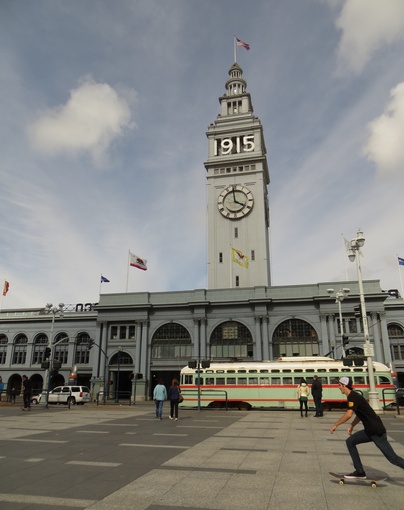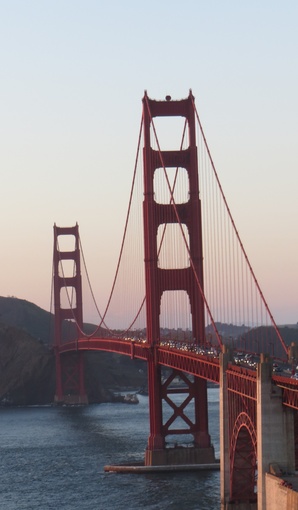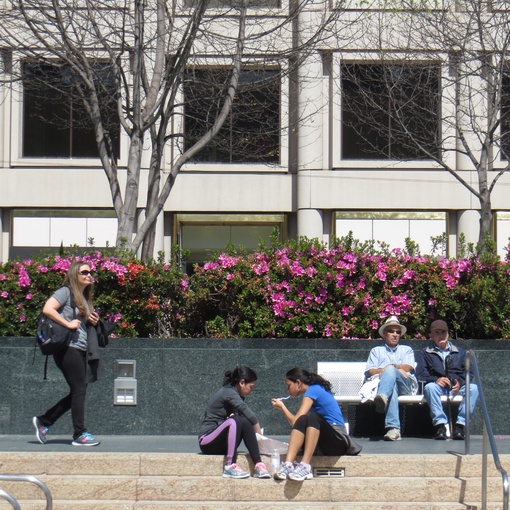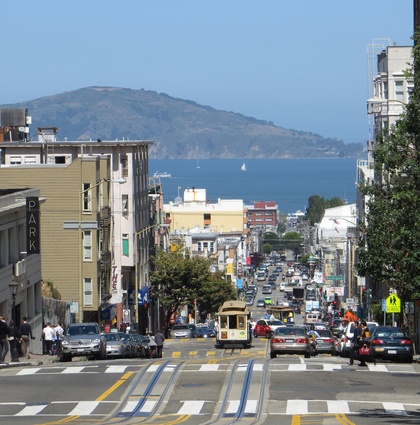

As a first-time visitor to San Francisco and the Bay area, I was struck by the different examples – big and small – of placemaking in the city. This blog features seven examples of placemaking I came across on a recent trip to San Francisco and the surrounding area.
Would you recommend your city to others? Do you think of it as a good place to make a living? What sort of jobs do people in your city have? Are there good options for housing?
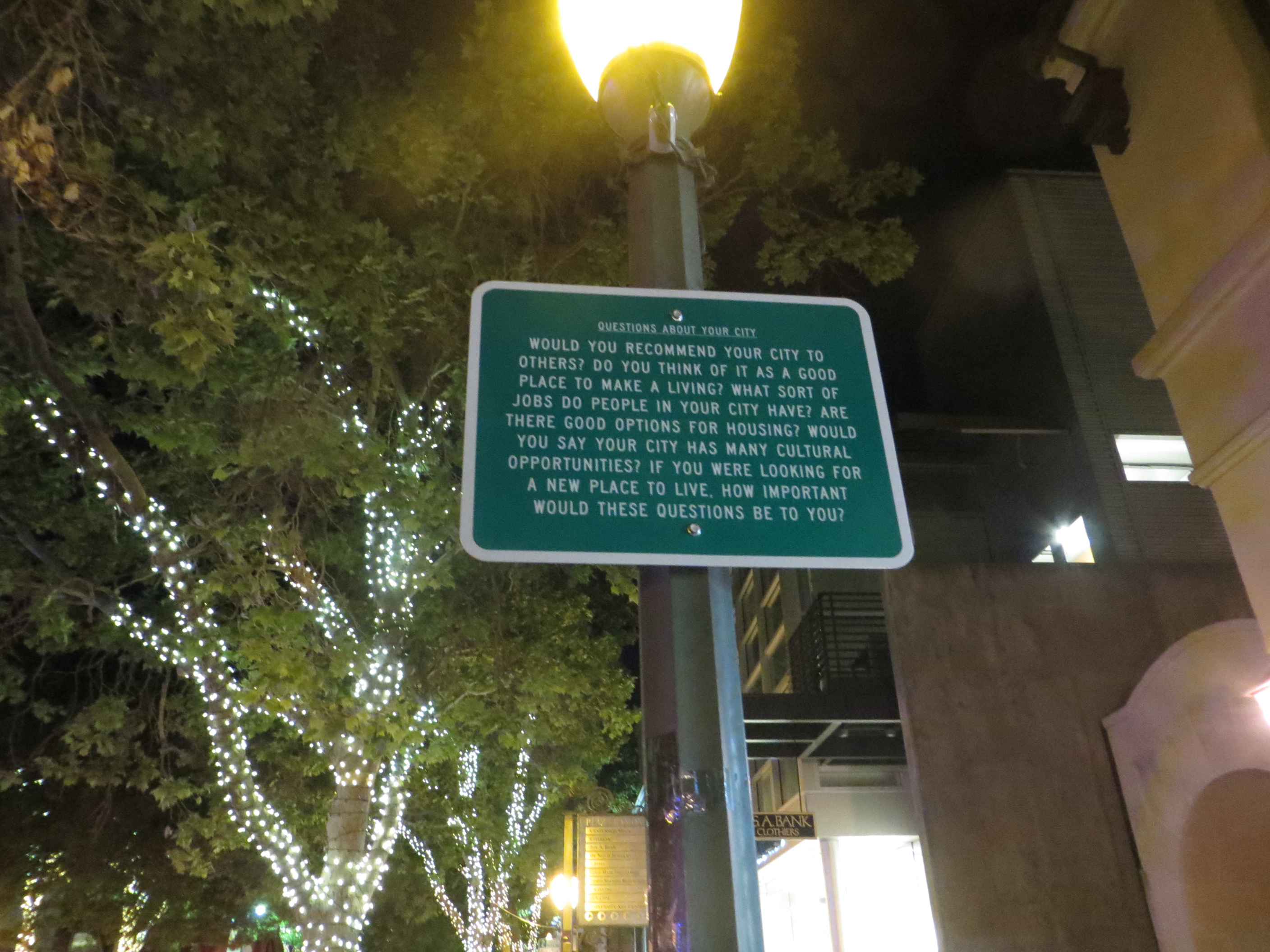
Good questions. In Palo Alto, I was confronted with these and other questions about the city. The 20 different street signs were installed on 20 different existing locations and are part of the artwork Questions about your city by Anthony Discenza.The questions are generalised, but are meant to get people to think about and talk about topics relevant to Palo Alto. The project is part of the City of Palo Alto’s Public Art Programme.
San Francisco is the birthplace of the parklet, a good example of how the city tries to make the most of its public spaces. The parklet, now a main feature of streetscapes across the city, developed from the Park(ing) Day concept by art and design studio Rebar. There are now over 40 parklets across the city, each with a unique design. They occupy former on-street parking spaces and provide seating and socialising space open to the public. Many parklets are sponsored by or looked after by local businesses. The Pavement to Parks programme oversees the creation of parklets, and is a collaborative programme between different San Francisco city authorities and local communities. The programme has an extensive Parklet Manual, detailing the process of creating a parklet, including criteria, applying for permits, construction, and city policy on parklets.
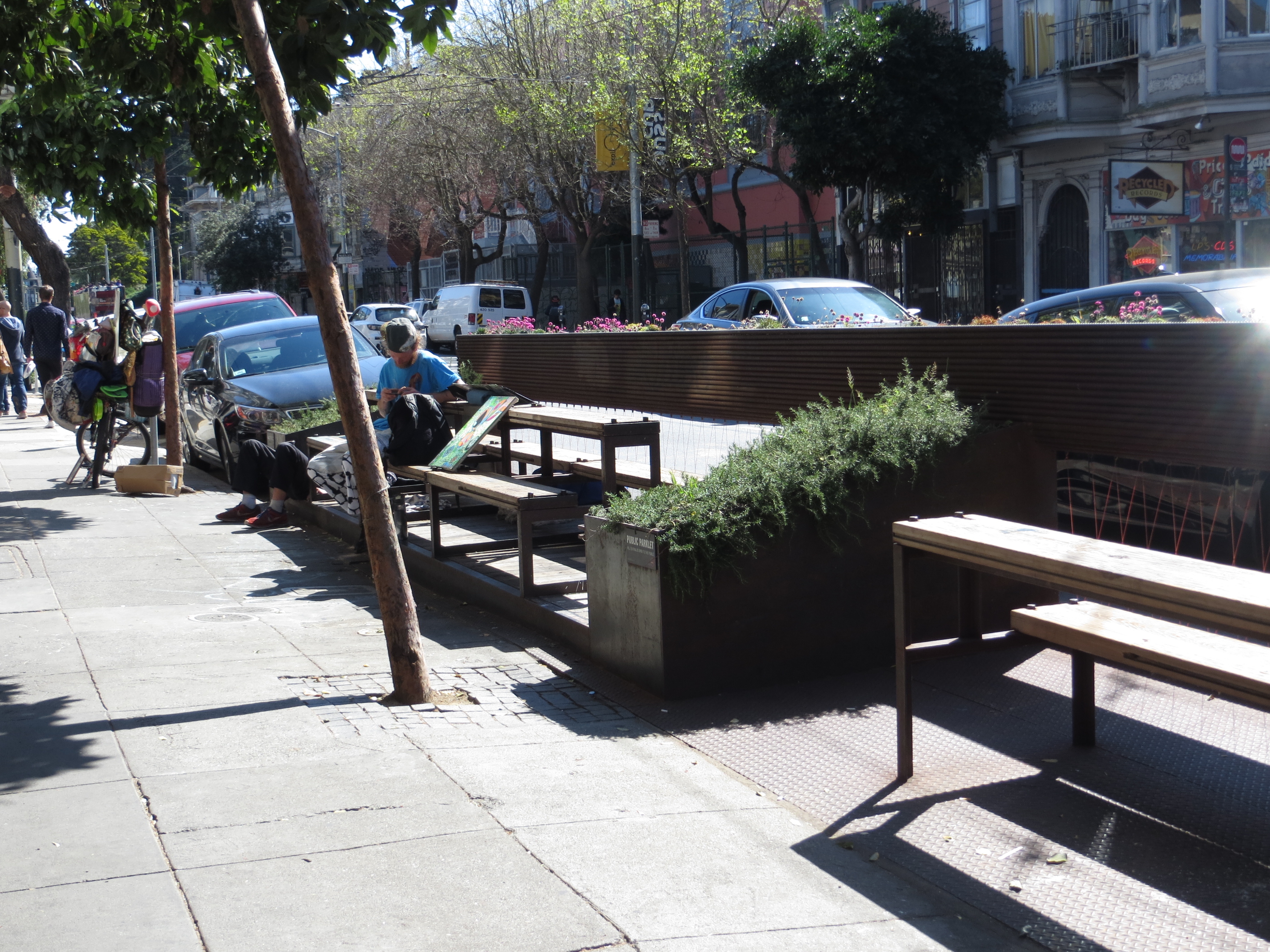
Placemaking in the city is not limited to the careful placement of parklets. While the Pavement to Parks programme is now five years old, Friends of the Urban Forest have been greening the city since 1981. Friends of the Urban Forest’s activities include tree planting, replacement, and care, community planting initiatives, and creating pavement gardens. They also run community engagement and education programmes.
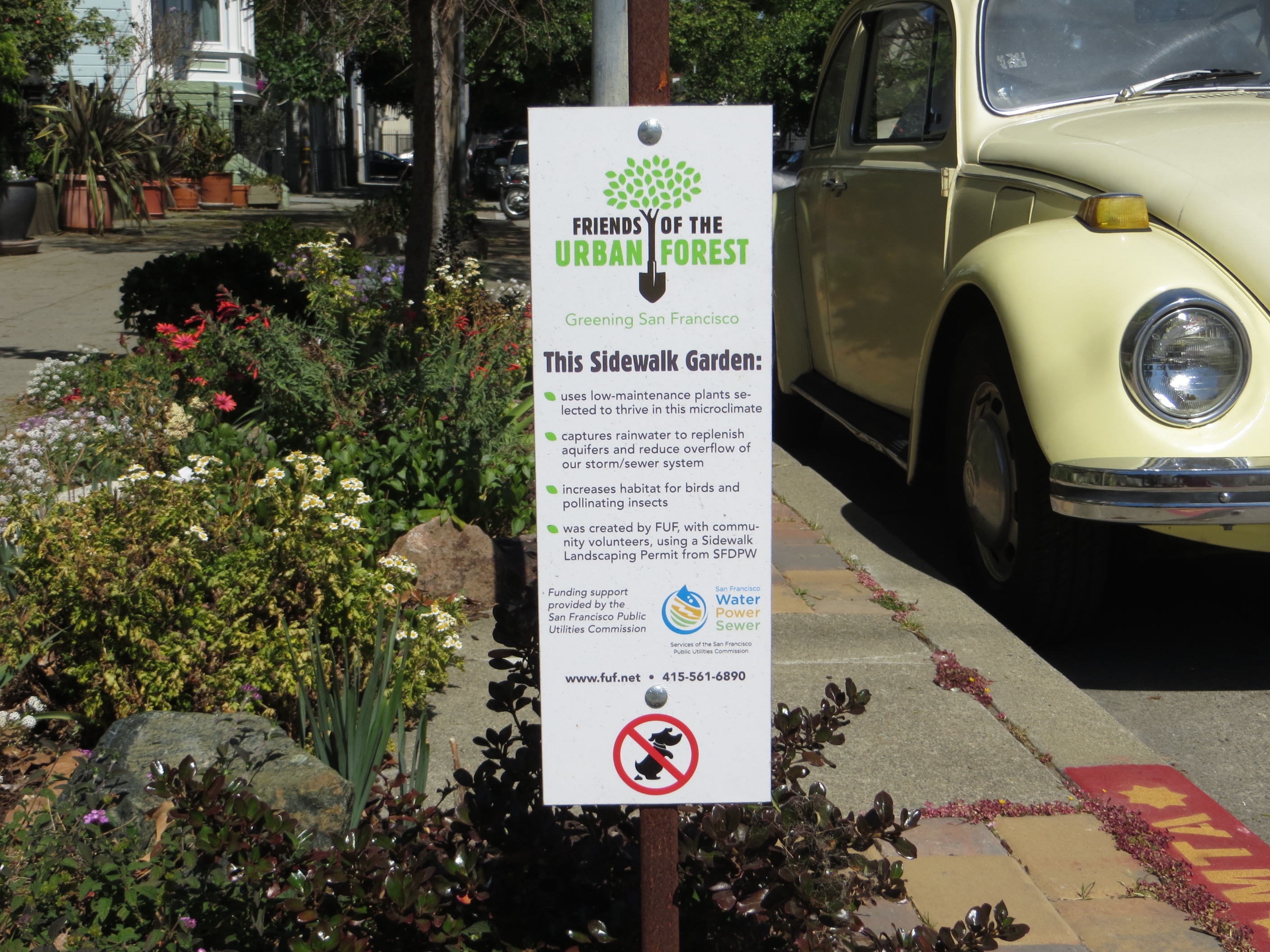
As with the creation of parklets, Friends of the Urban Forest’s work is supported by the local authorities and made possible through certain (free) permits.
Another initiative supported by local authorities is Sunday Streets, events where parts of streets are closed off in certain areas, turning them into temporary public spaces for walking, cycling, and other community events. The movement originated in Bogotá, Columbia in 1976 as Ciclovía, aimed at encouraging cycling. This type of initiative has since expanded across the world, and has been held in San Francisco since 2008 with the aim to encourage physical activities and community cohesion. Sunday Streets is now part of the Open Streets Project.
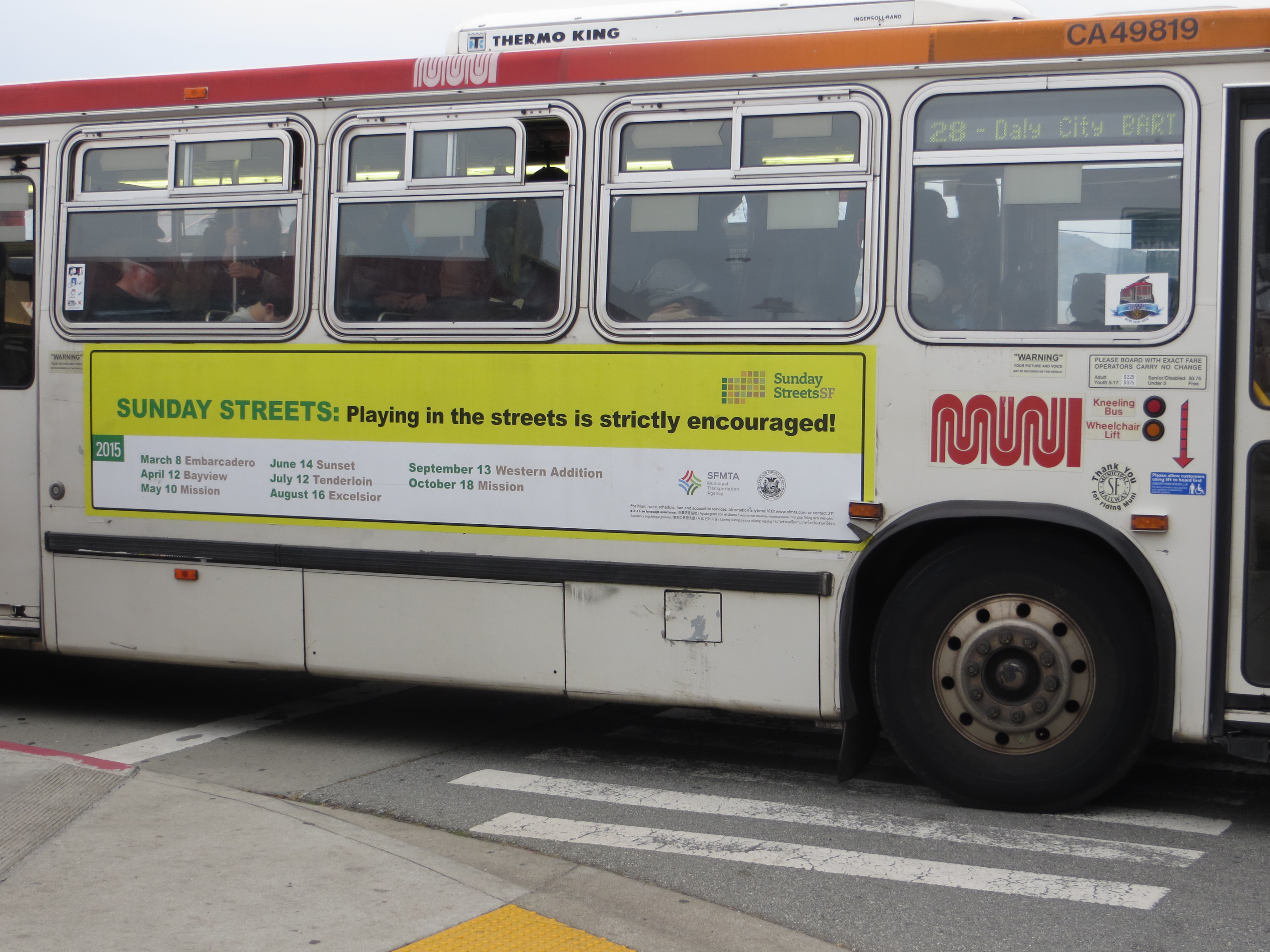
Less institutionalised placemaking initiatives are also in abundance across the city, especially in the forms of street art and graffiti. I spotted some Walk[Your City] signs - a DIY guerrilla wayfinding project focusing on walkability. The signs challenge perceptions of distance and make walking easier by providing good wayfinding signs.
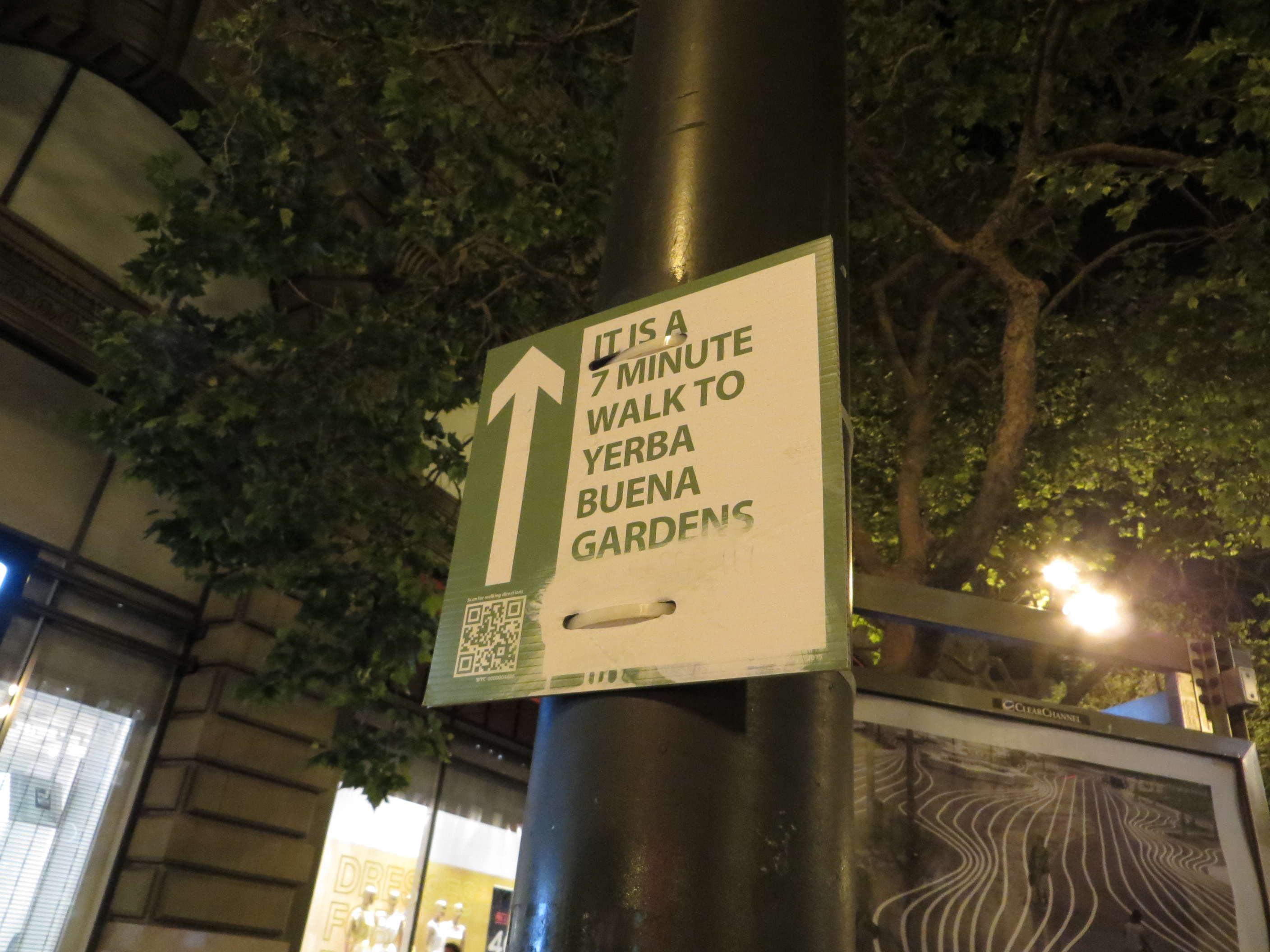
I also stumbled across Proxy, a temporary space in Hayes Valley. The space is part of an area where the elevated Central Freeway once stood (which was demolished after it was damaged by an earthquake). Due to be developed into affordable housing, the site was empty as the housing was put on hold after the recession. The City leased the site to architects Envelope A+D in 2010, who created Proxy, a public space with different events, vendors and stalls. The lease was recently extended, making it less temporary than first planned. There is currently a crowd-funding campaign for a free outdoor cinema in the space. An overview of the project can be found here.
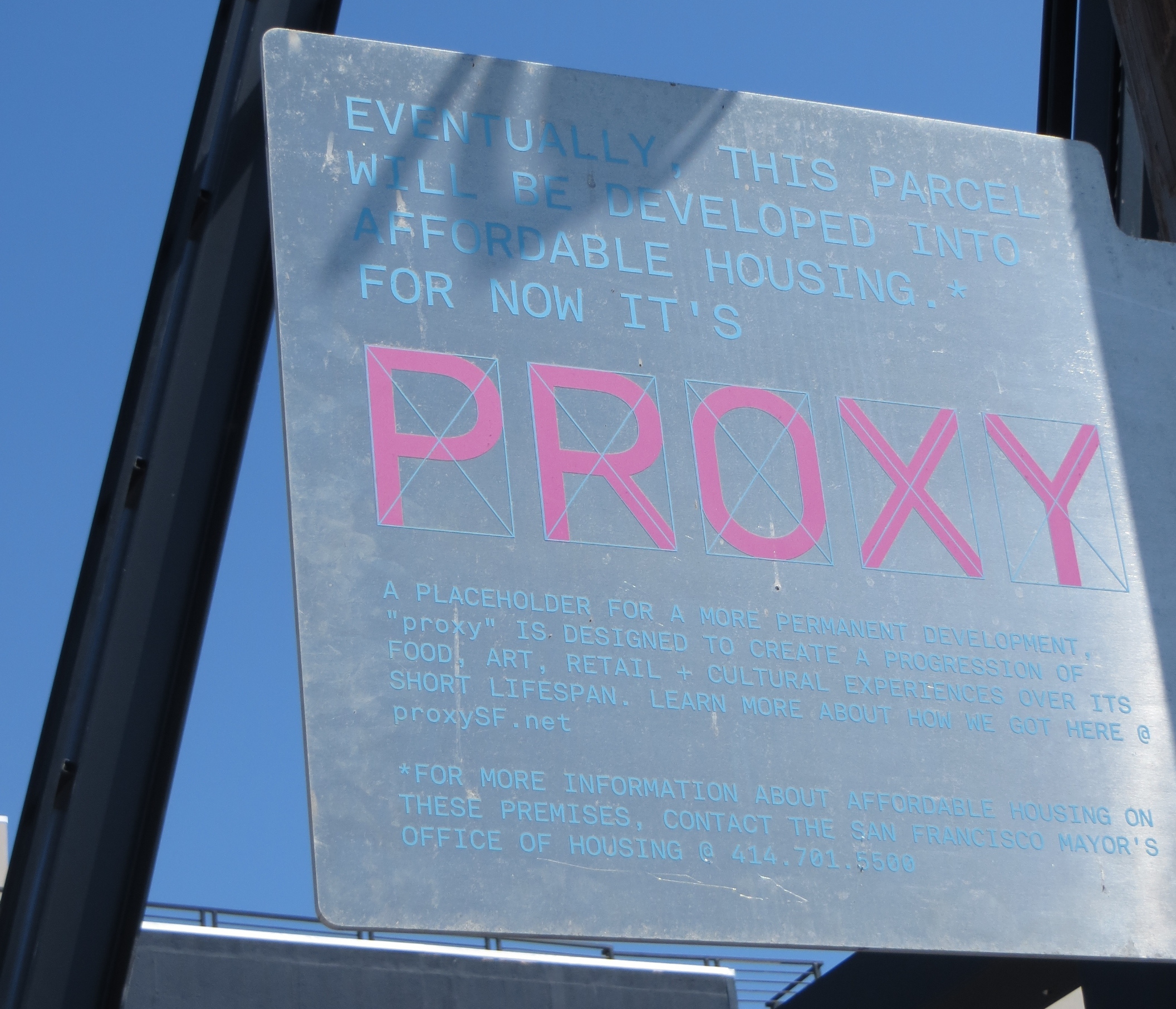
Street art can be found in abundance across the city.
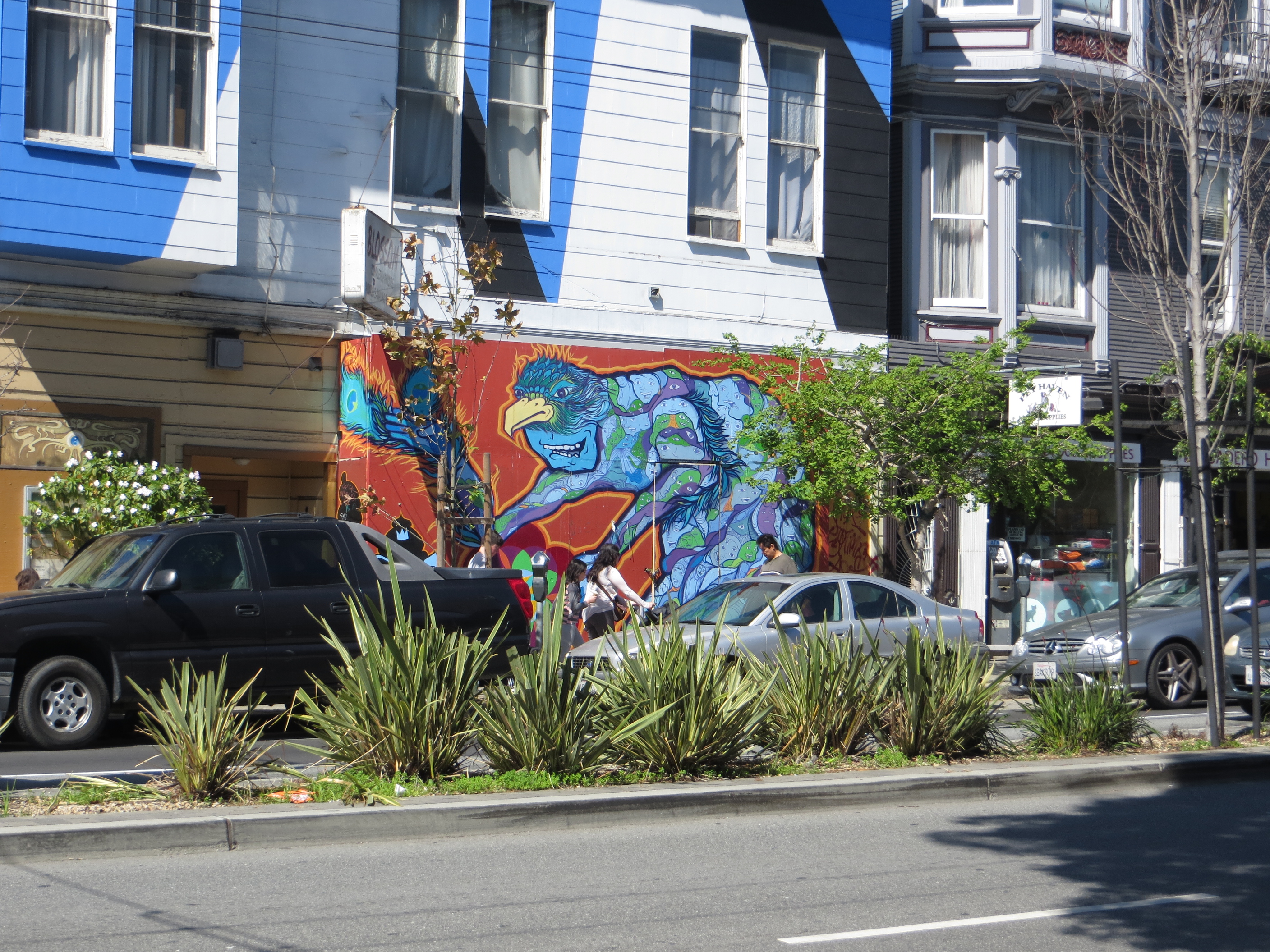
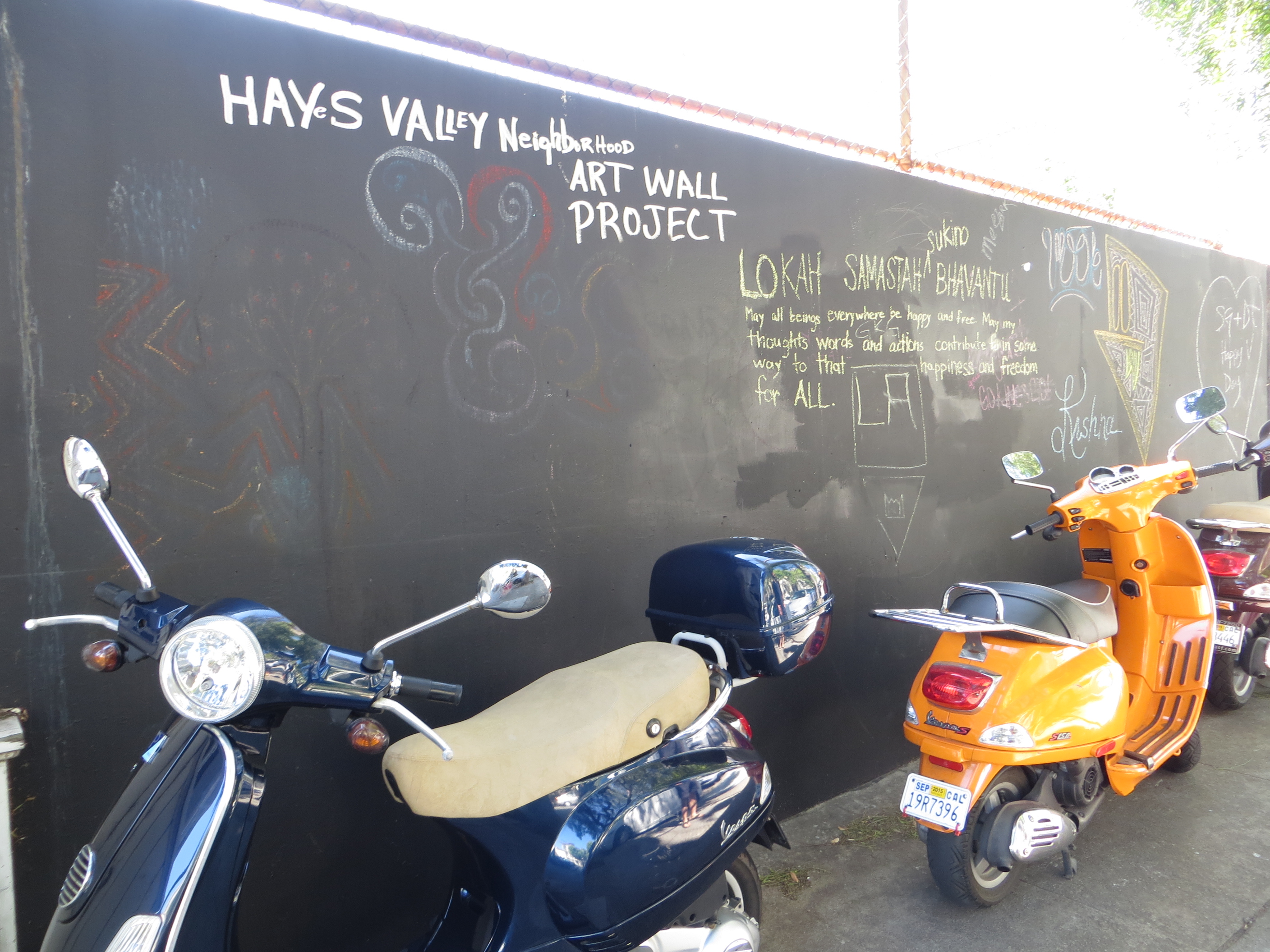
Even as a visitor, it is hard to ignore the fact that there is also tension in the city. As in many large cities around the world, a lot of areas are undergoing gentrification. In the Bay Area, gentrification is seen as the impact of the big tech companies, especially in the Mission district with increasing resident evictions, displacement, and rising rents for residents and businesses.
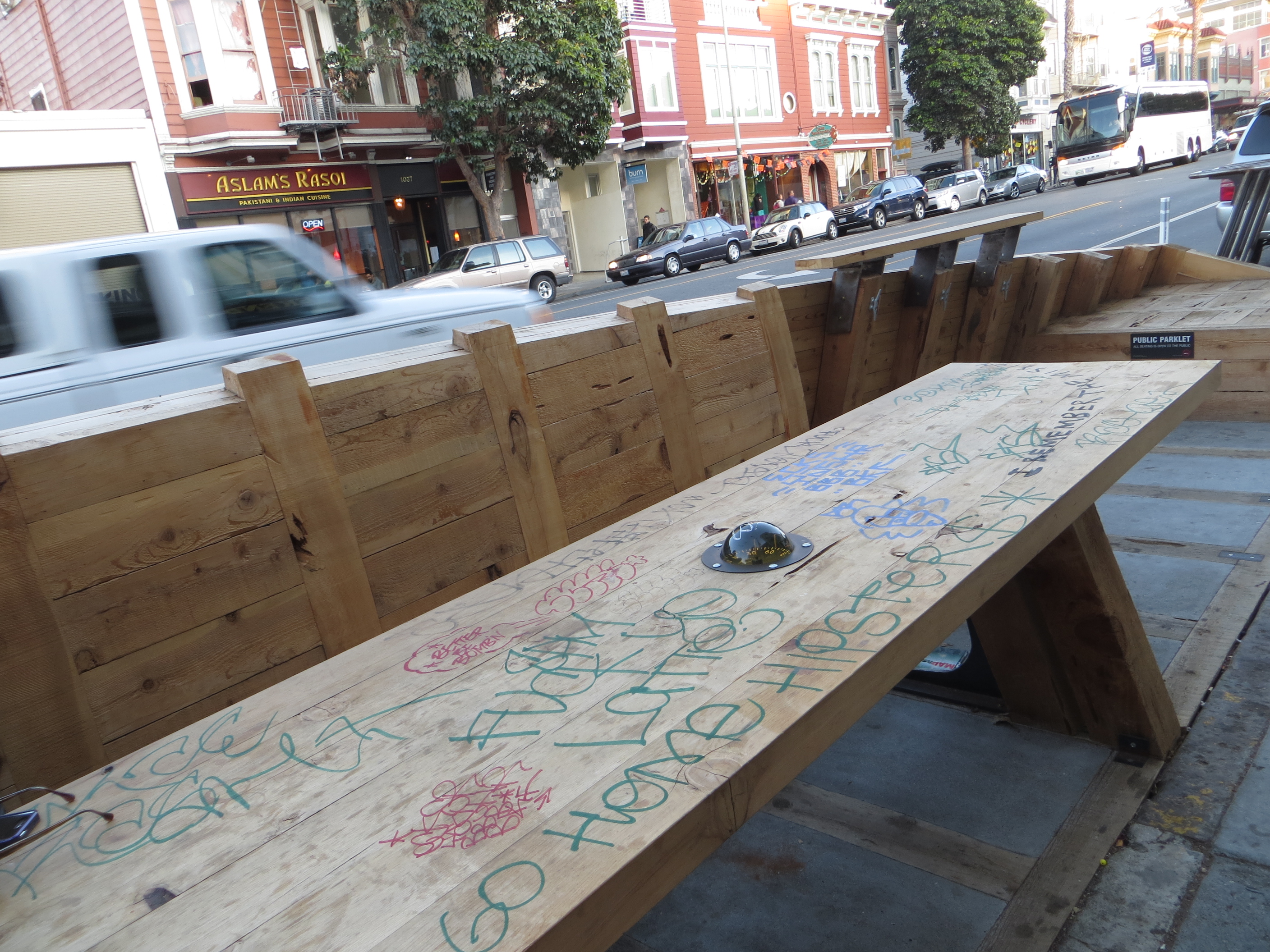
The Mission district particularly is known for its murals, specifically on human rights, social justice, gentrification, and other political themes. The Clarion Alley Mural Project is a grassroots artists collective formed in 1992. While the art in Clarion Alley doesn’t have a single theme, social inclusiveness and aesthetic variety stands central. When I visited, many of the artworks spoke out against the tech companies in the area and their impact on the existing residents and the area.
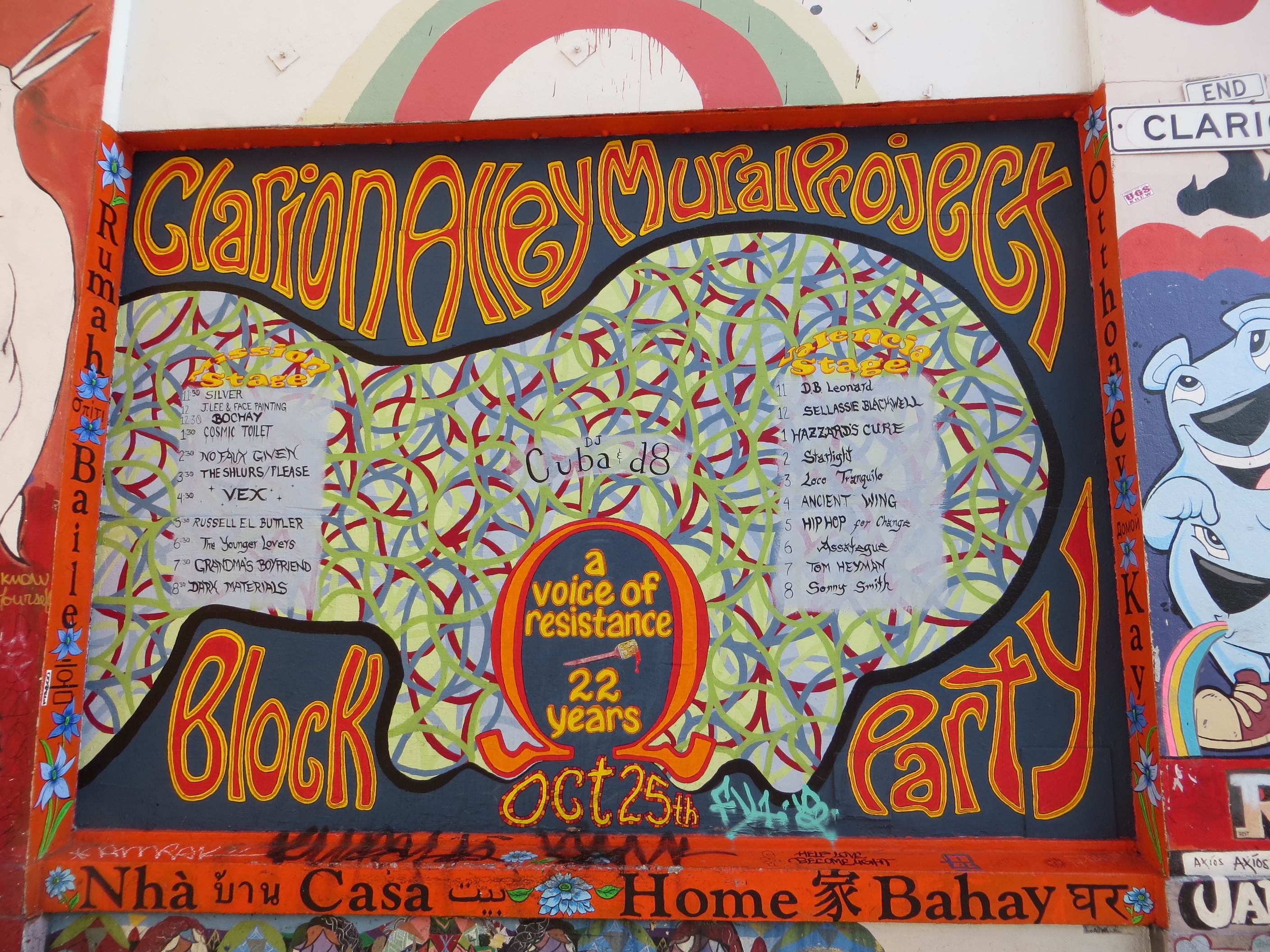
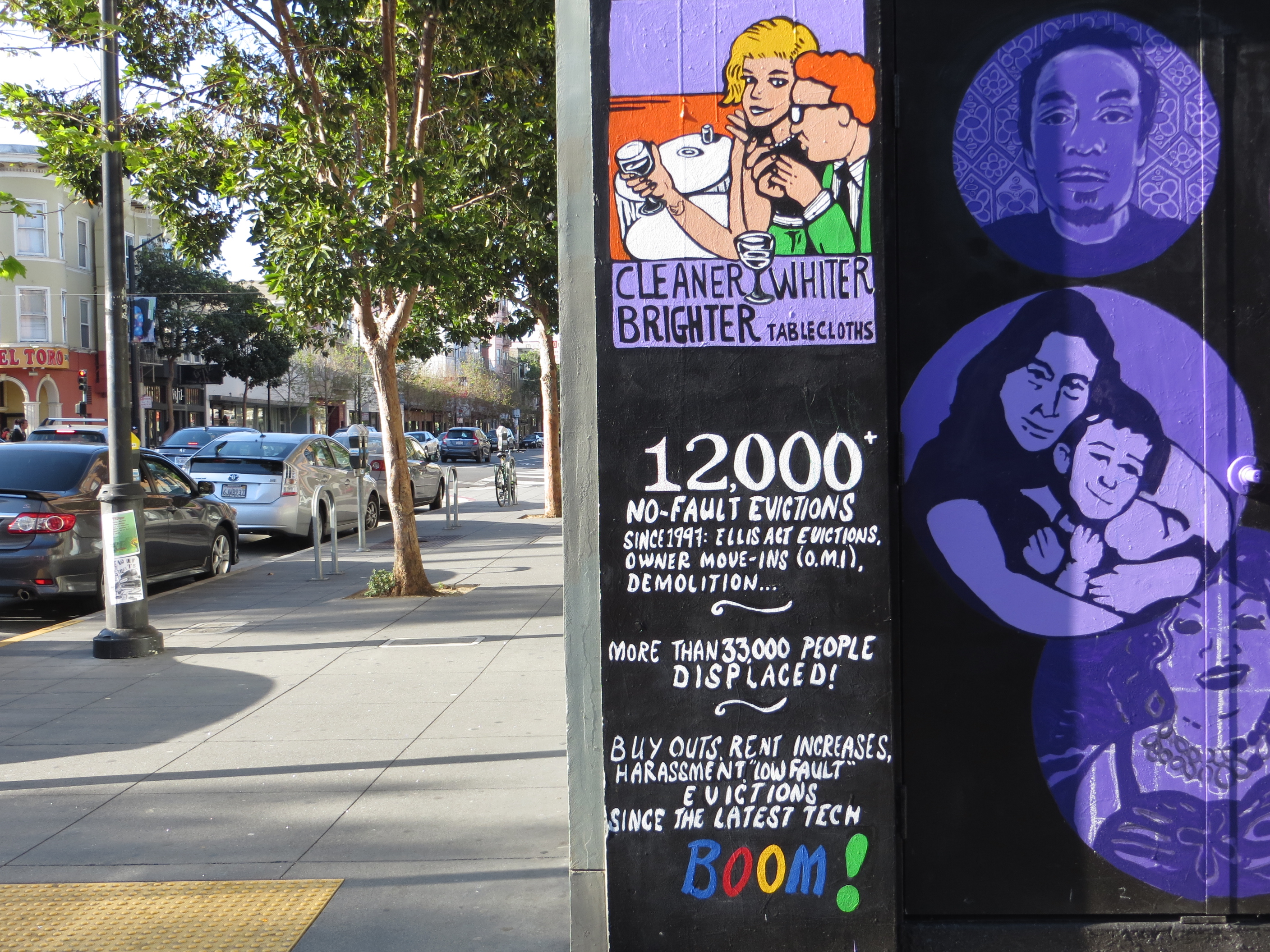
Saskia Baard is a project developer at Social Life.
